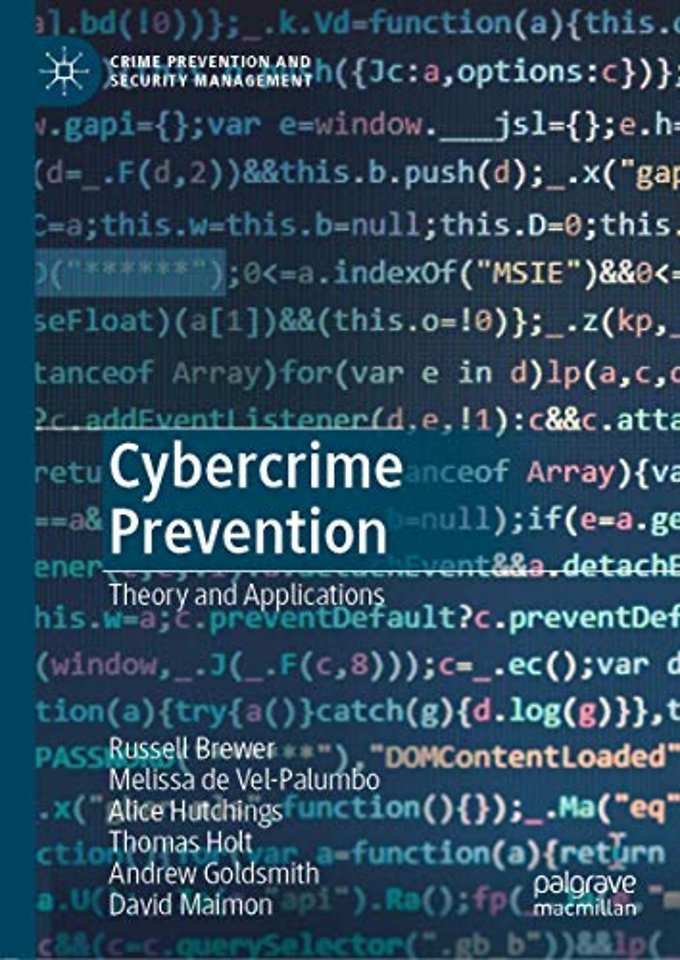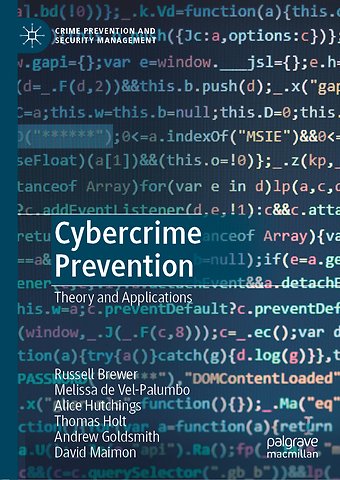Cybercrime Prevention
Theory and Applications
Samenvatting
This book articulates how crime prevention research and practice can be reimagined for an increasingly digital world. This ground-breaking work explores how criminology can apply longstanding, traditional crime prevention techniques to the digital realm. It provides an overview of the key principles, concepts and research literature associated with crime prevention, and discusses the interventions most commonly applied to crime problems. The authors review the theoretical underpinnings of these and analyses evidence for their efficacy.
Cybercrime Prevention is split into three sections which examine primary prevention, secondary prevention and tertiary prevention. It provides a thorough discussion of what works and what does not, and offers a formulaic account of how traditional crime prevention interventions can be reimagined to apply to the digital realm.
Specificaties
Inhoudsopgave
CHAPTER 1: SETTING THE SCENE
Introduction
Approaches to crime prevention
Factors associated with cyber-dependent offending
Parameters of the review
Overview of the book
References
PART I: PRIMARY FORMS OF PREVENTION
CHAPTER 2: SITUATIONAL CRIME PREVENTION
Introduction
Theoretical underpinnings of the intervention
Current applications
Evidence base for the intervention
Future applications and adaptations to digital contexts
References
CHAPTER 3: UNIVERSAL COMMUNICATION STRATEGIES
Introduction
Theoretical underpinnings of the intervention
Current applications
Evidence base for intervention
Future applications and adaptations to digital contexts
References
PART II: SECONDARY FORMS OF PREVENTION
CHAPTER 4: EDUCATIONAL WORKSHOPS
Introduction
Theoretical underpinnings of the intervention
Current applications
Evidence base for intervention
Future applications and adaptations to digital contexts
References
CHAPTER 5: MENTORING PROGRAMS
Introduction
Theoretical underpinnings of the intervention
Current applications
Evidence base for the intervention
Future applications and adaptations to digital contexts
References
CHAPTER 6: TARGETED WARNINGS AND POLICE CAUTIONS
Introduction
Theoretical underpinnings of the intervention
Current applications
Evidence base for the intervention
Future applications and adaptations to digital contexts
References
PART III: TERTIARY FORMS OF PREVENTION
CHAPTER 7: POSITIVE DIVERSIONS
Introduction
Theoretical underpinnings of the intervention
Current applications
Evidence base for intervention
Future applications and adaptations to digital contexts
References
CHAPTER 8: RESTORATIVE JUSTICE
Introduction
Theoretical underpinnings of the intervention
Current applications
Evidence base for intervention
Future applications and adaptations to digital contexts
References
CHAPTER 9: DESIGNING AND EVALUATING CRIME PREVENTION SOLUTIONS FOR THE DIGITAL AGE
Navigating the cybercrime intervention minefield
Selecting the appropriate study design
Sourcing the best possible data
Being attentive to ethical issues
Acknowledging generalisability concerns
Charting a path forward for researchers and practitioners
References
Anderen die dit boek kochten, kochten ook
Rubrieken
- cadeauboeken
- computer en informatica
- economie
- filosofie
- flora en fauna
- geneeskunde
- geschiedenis
- gezondheid
- jeugd
- juridisch
- koken en eten
- kunst en cultuur
- literatuur en romans
- mens en maatschappij
- naslagwerken
- non-fictie informatief/professioneel
- paramedisch
- psychologie
- reizen
- religie
- schoolboeken
- spiritualiteit
- sport, hobby, lifestyle
- thrillers en spanning
- wetenschap en techniek
- woordenboeken en taal







